![[6.26.19] Working Smarter- The Intelligent Office Image of an office with WiFi and Bluetooth symbols hanging around it](https://www.iotforall.com/wp-content/uploads/2019/06/6.26.19-Working-Smarter-The-Intelligent-Office-696x428.jpg)
Smart houses, smart cars, and smart cities—each of these environments benefit from the 8.4 billion connected devices expected to fill the world this year. The Internet of Things (IoT) is an evolving ecosystem of smart living and connected devices that work together to create better capabilities, efficiencies and most importantly, experiences. It also affects our time in the office, where Gallup says we spend up to 47 hours per week. IoT devices are changing the way we think about office design, the employee experience and creating environments for optimum productivity and creativity. Smart technology is enabling more intelligent offices.
Intelligent products and services control lighting and temperature, help us find quiet spaces to think and highlight ways to connect effectively with our colleagues. Here’s a closer look at trends in intelligent products and services we’re watching at Flex, which fuse form and function in ways that optimize people’s experience in the office, enabling them to be their best, most productive selves at work.
Smart Lighting
IoT lighting devices help create office environments that use lighting to optimize productivity and even creativity. Guided by smart software, systems may allow users to dim and brighten lights via a smartphone app. Today’s more sophisticated systems use sensors in lighting fixtures to brighten and dim in response to natural light levels, continuously optimizing the environment throughout the day. Circadian systems use sensors to sync lighting with the time of day, offering bright, cool light to help teams launch into action in the morning and gradually softening throughout the day. It’s even possible to use smart lighting to create diffused light, which promotes creativity. A report by BI Intelligence shows IoT lighting can help cut costs. In one example, the use of smart LED lighting reduced energy costs by 75% while productivity increased by 20%.
Ambient Temperature Control
Smart technologies are automating ambient temperature. An IoT-powered desk by Arup uses sensors that give individuals control over the temperature in their immediate environment, which is especially relevant in today’s largely open-floor-plan offices. Systems can track heat signatures throughout a building to determine whether they’re too warm or too cool, and based on occupancy detection and measures of air quality, they can adjust the HVAC settings. Not only does this enable more control for individual employees, but it helps us more proactively manage energy costs and contributes to sustainability initiatives.
Live Mapping
Live mapping technologies use a mix of beacons and sensors to help users more effectively navigate their offices. Need to know which conference room is available, whether a bathroom is in use, or which space is most likely to yield the quiet time needed to solve a complex problem? A number of different technologies help us better understand how spaces are used and occupied. The data helps commercial real estate professionals optimize the tenant experience and helps the average worker seamlessly move through their day while cutting out unnecessary steps.
Enlightened, for example, put sensors into fleets of LED lights and uses software to track movement against a building plan. Users can gather data on energy usage, control HVAC and more. IoT technologies are even helping us better manage collaboration and face-to-face time. Humanyze’s badge module tracks in-person meetings, management visibility and the tones of voices and movements (via infrared) that lead to successful business outcomes.
Ergonomics and Wellness
The U.S. Occupational Safety and Health Administration (OSHA) estimates that employers pay almost $1 billion per week treating the effects of poor ergonomics. IoT devices are changing the way businesses design office environments to support employee health and wellness. The Stir Kinetic desk is a hybrid standing and sitting desk controlled via a touch screen and using cloud-based architecture to store individual profiles and preferences. Sensors monitor how much users sit and stand daily, sharing that information with them, as well as providing “WhisperBreath” reminders via a slight shift in desk position when it’s time to move. Smart chairs are being constructed with sensors to alert employees when their posture is bad and provide recommendations for improvement.
Integrated Workplace Platforms
The full promise of the smart office comes into focus when a single hub is used to pull together insights from different platforms. Research and Markets predicts that the IoT integration market will reach $22 billion per year by 2022. With integrated workplace platforms, organizations and individuals can do the following:
- Get a full picture of an individual worker’s day, from biometrics and stress levels to productivity and locations throughout the office, to provide actionable insights and coaching to improve performance.
- Employ automated systems that streamline and optimize the ambiance of any office, for maximum comfort, productivity or other goals.
- Utilize smart, data-driven platforms that help organizations understand all aspects of physical office space use and guide decisions from cost-saving strategies to informed architecture and design strategies.
While the impact of IoT has begun to mature and achieve significant results in areas such as manufacturing and industrial operations, we’re at the beginning of the curve for smart products in the office. Innovative IoT tools are helping employees and businesses make better decisions about day-to-day activities and long-term operations. For product creators, this is a market with significant opportunities, where startups and enterprise players have only begun to scratch the surface of what is possible.





 Related Podcast Episode
Related Podcast Episode
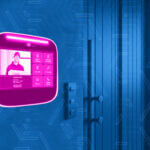
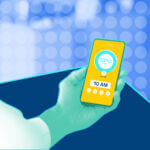
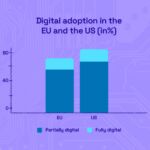

 Related Applications
Related Applications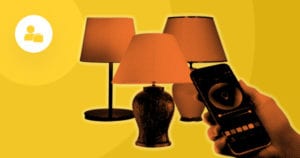
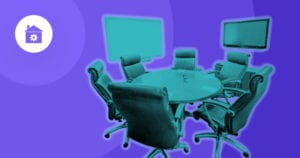
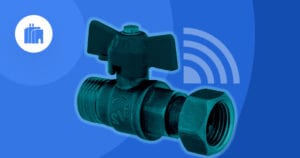

 Latest IoT News
Latest IoT News








